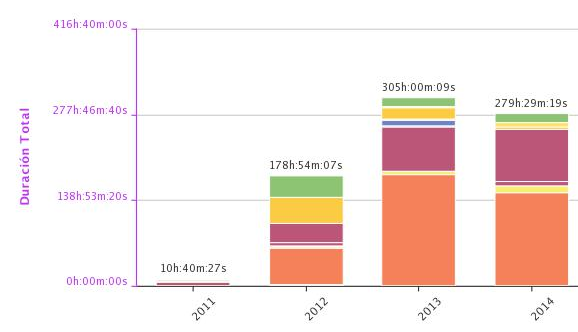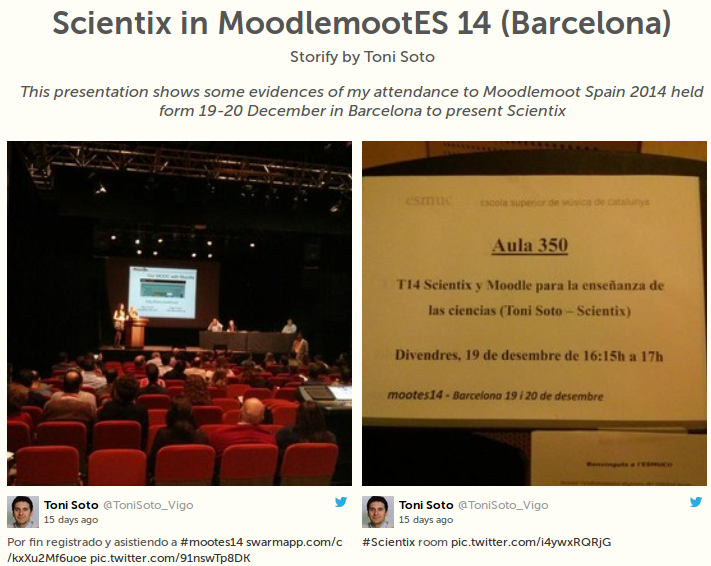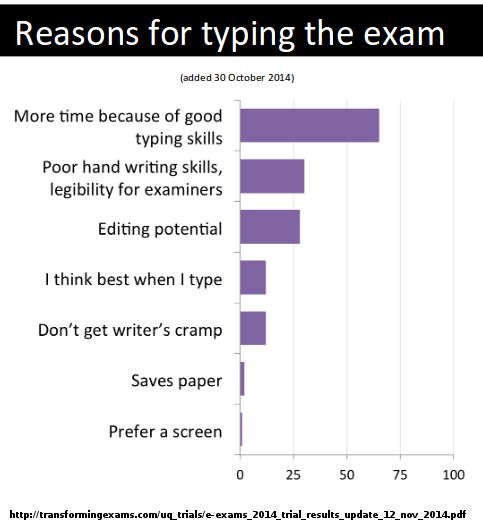Estos son los datos de mi actividad deportiva que registré a través de la aplicación Endomondo durante el año 2014. Este año, a diferencia del resúmen del año pasado lo presento con gráficos. ¿Qué tiene que ver esta entrada con los temas sobre los que habitualmente escribo (STEM, Scientix, Tecnología educativa..)? Me temo que tendrás que seguir leyendo hasta el final del post para saberlo 😉
Empecemos por comparar el número de horas dedicada a actividad deportiva este año en relación a los anteriores de los que existe registro. Los datos del año 2011 son parciales ya que comencé a utilizar Endomondo hacia el final del año y, los del año 2012 no recogen todas las horas de pádel jugadas. En resumen los dos gráficos más significativos y por tanto comparables son los de los años 2013 y 2104:

Nº total de horas anuales dedicadas a actividad deportiva
El color naranja representa las horas dedicadas a jugar al pádel. Endomodo no ofrece el pádel como modalidad deportiva así que lo registro como tenis aunque yo no juego al tenis. Por otra parte los datos de horas de padel en el año 2012 no son significativos ya que, en ese año no registré todos los partidos jugados. La segunda actividad que más horas registra (color grana) corresponde a ‘caminatas deportivas‘. El color verde representa las horas dedicadas a correr (running) y las amarillas a horas de salida en bicicleta.
Continue reading ‘Mi Práctica Deportiva durante el año 2014 y … algo más’ »


